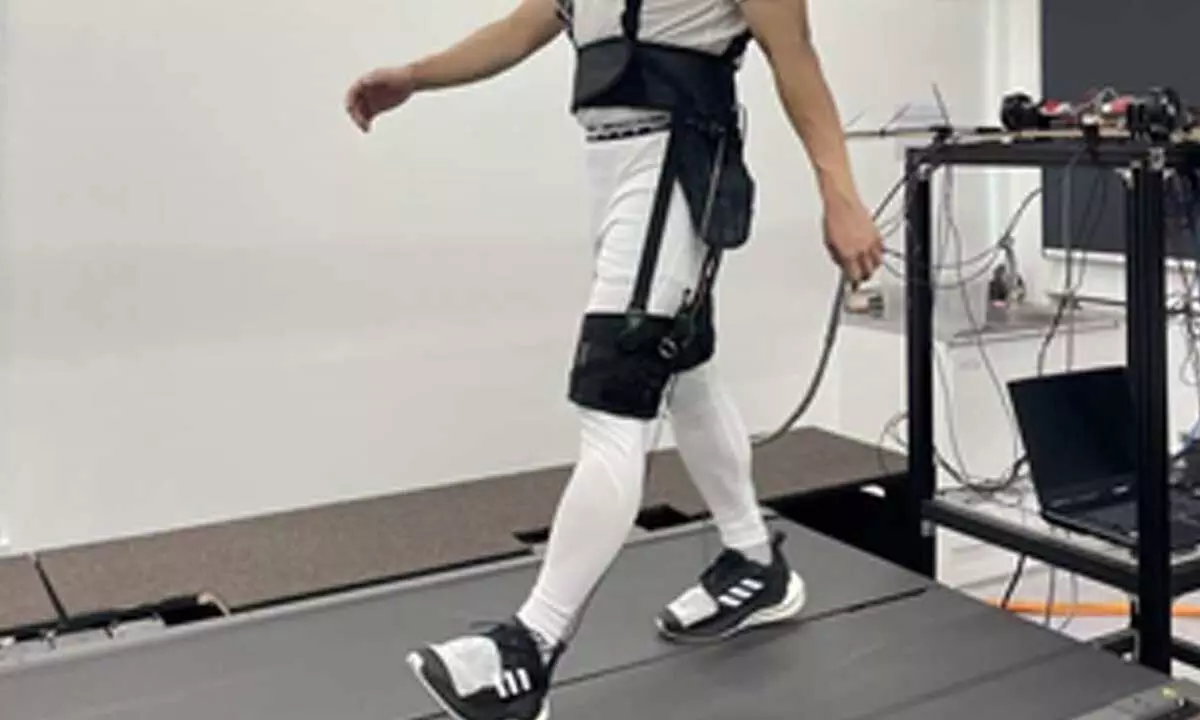New wearable robot to assist people with walking difficulties
Share :

Researchers have developed a new wearable robot that is designed to specifically assist people with difficulties in walking due to ageing, muscle weakness, surgeries or specific medical conditions.
Seoul: Researchers have developed a new wearable robot that is designed to specifically assist people with difficulties in walking due to ageing, muscle weakness, surgeries or specific medical conditions.
The robot, described in a paper published in Science Robotics, was found to improve balance, while also reducing the energy spent while walking (i.e., the so-called metabolic cost).
"Our recent paper was primarily inspired by the recognition that most wearable robots for gait assistance have focused solely on movements in the sagittal plane," Giuk Lee, one of the researchers who carried out the study at Chung-Ang University in South Korea, told Tech Xplore.
"However, walking is inherently a three-dimensional activity, and movements in other planes are just as crucial," Lee added.
Unlike previous robotic systems for hip abduction assistance, the new robot focuses on the frontal plane -- known to support movements and lateral stability while walking.
It mimics the natural hip abduction movement -- of the leg away from the body's midline, which supports walking and many other actions humans perform every day.
"As we walk forward, our body's center of mass naturally shifts side to side to maintain balance -- a process known as recovery. During this recovery phase, the hip abduction muscles are engaged. Our device assists these muscles, making it easier for the wearer to recover their center of mass with less effort," Lee said.
Lee and his colleagues evaluated their robot's performance in both simulations and real-world experiments.
The results of these tests were highly promising, showing that the robot reduced the metabolic cost of walking by 11.6 per cent compared to normal, unassisted walking, while also improving balance and stability.
The robotic system can be improved further and eventually commercialised, supporting both rehabilitation and everyday use.














